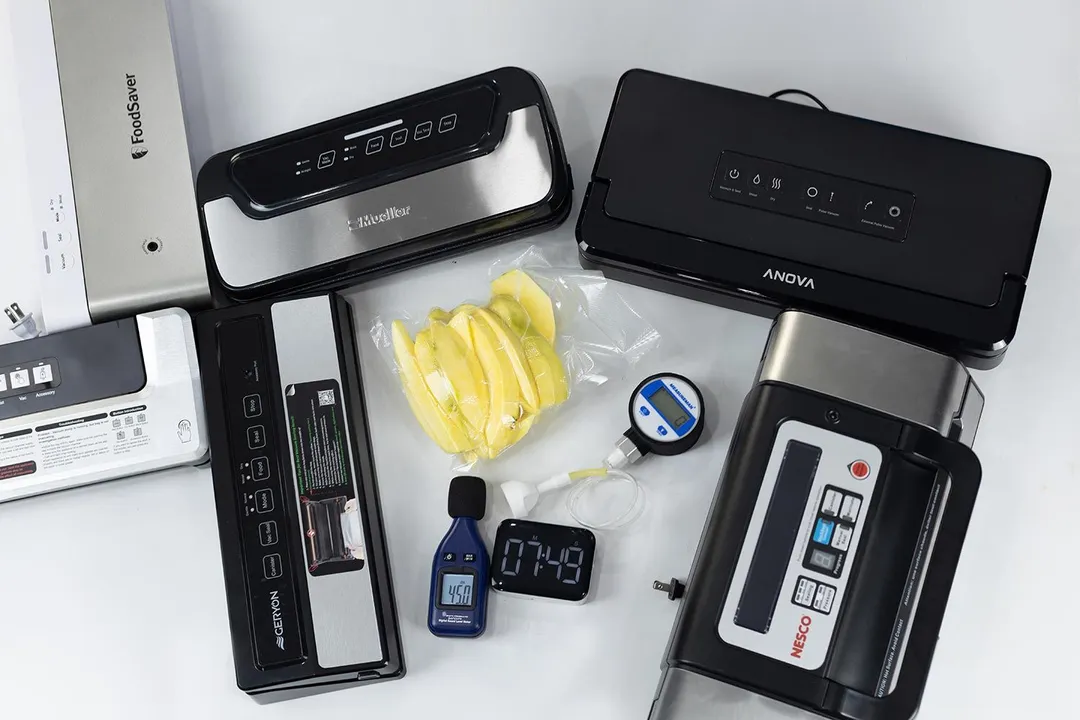Our recommendations are made independently through Research & Testing. We may receive commissions from purchases made via our links.
How We Test Vacuum Sealers v1.0
We’ve tested and scored over a dozen vacuum sealers in our lab. This article detailed the process we used to score and assess each model!
A vacuum sealer is a valuable tool for meal planning. It allows you to purchase ingredients in advance, seal them in vacuum bags, and store them in the fridge for later use.

When you vacuum-pack your food and store it in the fridge, it can stay fresh for 10-15 days, compared to only 8-10 days without vacuum sealing under the same storage conditions.
Our team at Healthy Kitchen 101 has been testing and scoring the best vacuum sealers on the market. If you're curious how we assigned scores to each model and the specific criteria we considered during our evaluation, you can find all the specifics in this article!
Overall Ratings
The overall rating for each model is the ultimate score that best reflects their value. This score is based on the combined scores across all three major test categories, weighted based on how important we consider them to be in evaluating the value of a vacuum sealer.
We evaluate each model's overall rating by considering three main test categories: Performance (50%), Design (20%), and Usability (30%). Within each category, there are specific sub-categories that contribute to the overall score of that particular test segment. We'll explain these sub-categories in more detail below!
Performance (50%)
The performance of a vacuum sealer is closely linked to the strength of its suction motor. A stronger motor is preferable as it can effectively remove more air from the bag, resulting in a tighter seal.
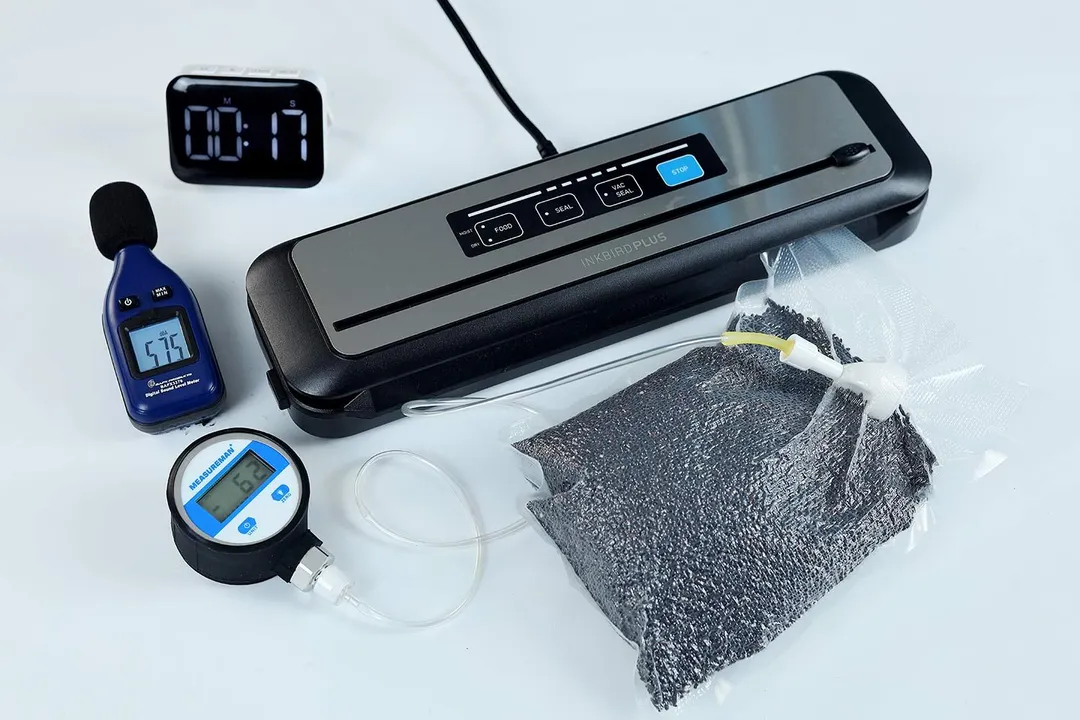
Dry Food Test (60%):
In our initial test, we use dry food, specifically black rice grains. We load a bag with 2.2 pounds (1 kilogram) of rice, vacuum it, and seal it. The bag is connected to a vacuum pressure gauge, which measures the pressure in kPA.
We also time how quickly each sealing session is completed. We repeat this process twice for each model and then calculate the average results. A more detailed version of the test can be viewed here.
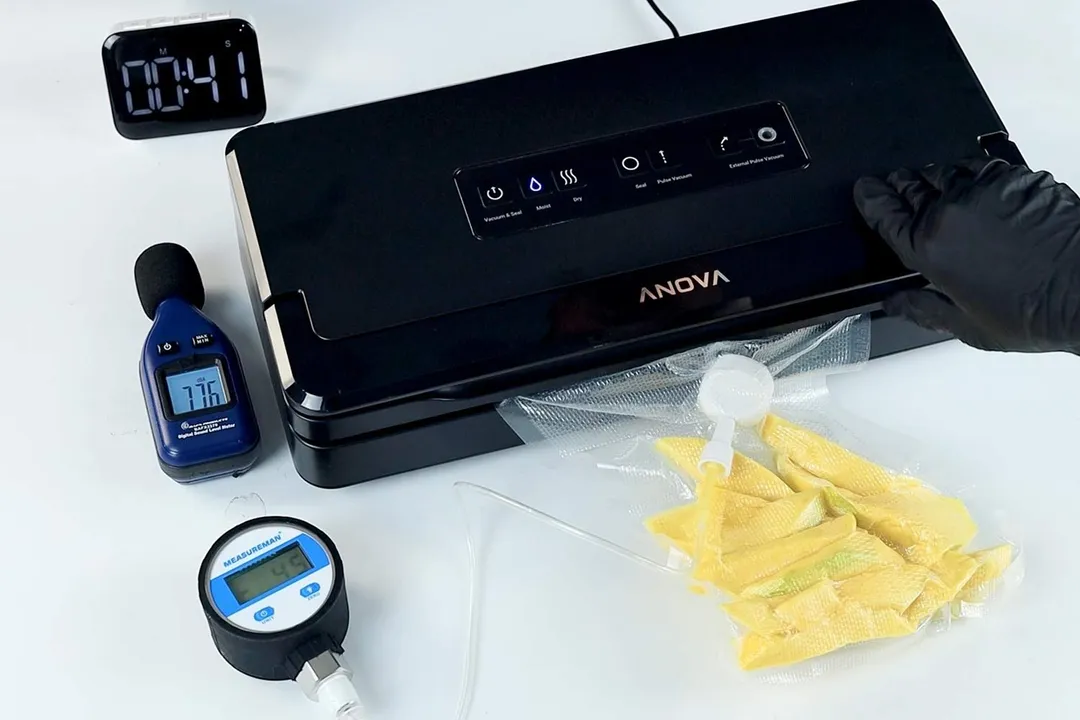
Moist Food Test (40%):
The second test involves moist food and follows a similar procedure. We pack a plastic food bag with 12.4 ounces (350 grams) of fresh mango slices. The bag is inserted into the vacuum sealer, vacuumed, and sealed.
A vacuum pressure gauge records the sealer's strength in kPA, and we use a timer to measure the duration of each operating session. You can check out the full details of the test here.
Design (20%)
Following the evaluation of sealing performance, our team of reviewers thoroughly examines each model's construction. This includes scrutinizing the housing, heating bar design, vacuum channel, and other elements. The build quality of a vacuum sealer is critical for its durability and user-friendliness.
We focus on assessing four key components:
1. Build Quality (50%)
We evaluate the overall construction and design of the sealer, looking for any design-related issues that could potentially impact its long-term durability.
2. Control Panel (20%)
The control panel of the sealer, including buttons and indicator lights, is carefully assessed. We consider the layout's intuitiveness and ease of use.
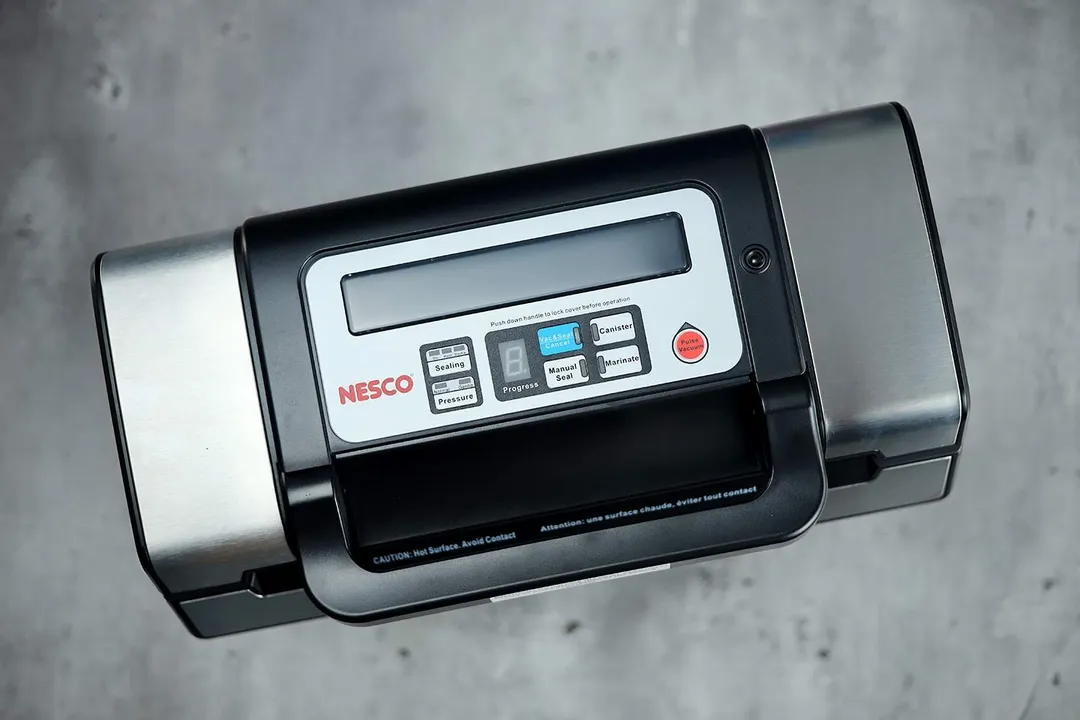
3. Lid (20%)
The lid is a crucial part of the sealer's functionality. Our reviewers examine its construction and the effectiveness of the locking mechanism.
4. Extra Features (10%)
For mid-to-high-end models, extra features can enhance usability. If a model includes such features, our reviewers take them into account during the evaluation.
Usability (30%)
Vacuum sealers are generally easy to use, but some models are more user-friendly than others. In this evaluation, we focus on assessing their ease of use.
Ease of Use (70%)
Our reviewers gauge how easy and convenient it is to operate the vacuum sealer during testing.
Safety & Noise (15%)
While vacuum sealers are generally safe, some components, like the heating bar, can become hot enough to cause minor injuries. We examine whether the design incorporates safety features and signals to make it safer for users. Additionally, we measure the noise level generated by the unit during operation.
Indicator Lights and Chime (15%)
Our reviewers evaluate the brightness of indicator lights while the sealer is in use. We also consider other signaling systems, such as chimes, that aid users in monitoring the sealing process without requiring constant attention.
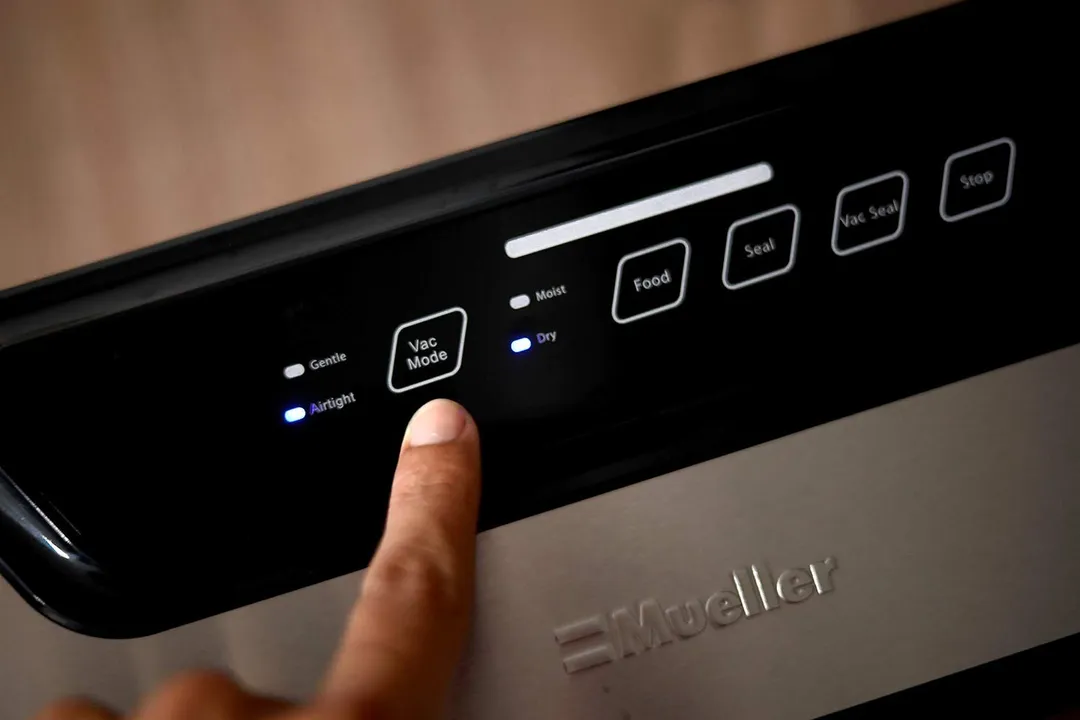
References
https://www.researchgate.net/publication/311982505_Effect_of_Vacuum_Packaging_Method_on_Shelf_Life_of_Chicken - Mathew, R., Jaganathan, D., & Anandakumar, S. (2016). Effect of Vacuum Packaging Method on Shelf Life of Chicken. Imperial Journal of Interdisciplinary Research (IJIR), 2.
Test Developers
Matthew Lee is a writer and editor for HealthyKitchen101. With over 8 years working for various outlets and agencies, specializing in tech review and other subjects of note, such as current affairs.
Lap is Head of the Research, Testing, and Review Team (RTR Team) at HealthyKitchen101.com, where he directs and supervises the testing of kitchen gadgets and appliances.
Nguyen Ntk is a graphic designer, photographer, and videographer whose philosophy centers around respecting and celebrating the beauty of reality. Through his lenses, Nguyen strives to capture the true essence of objects and events, showcasing and highlighting authentic features without distortion or exaggeration.



